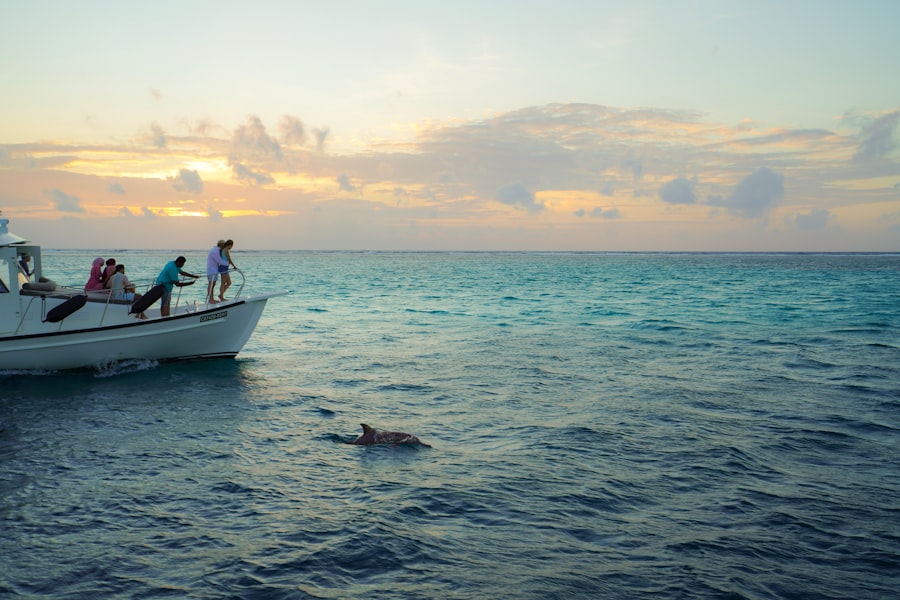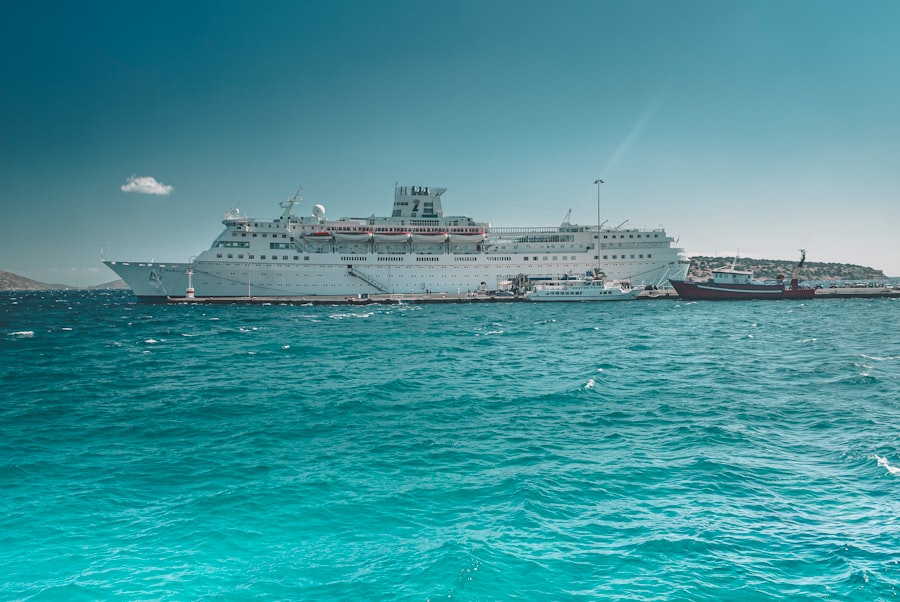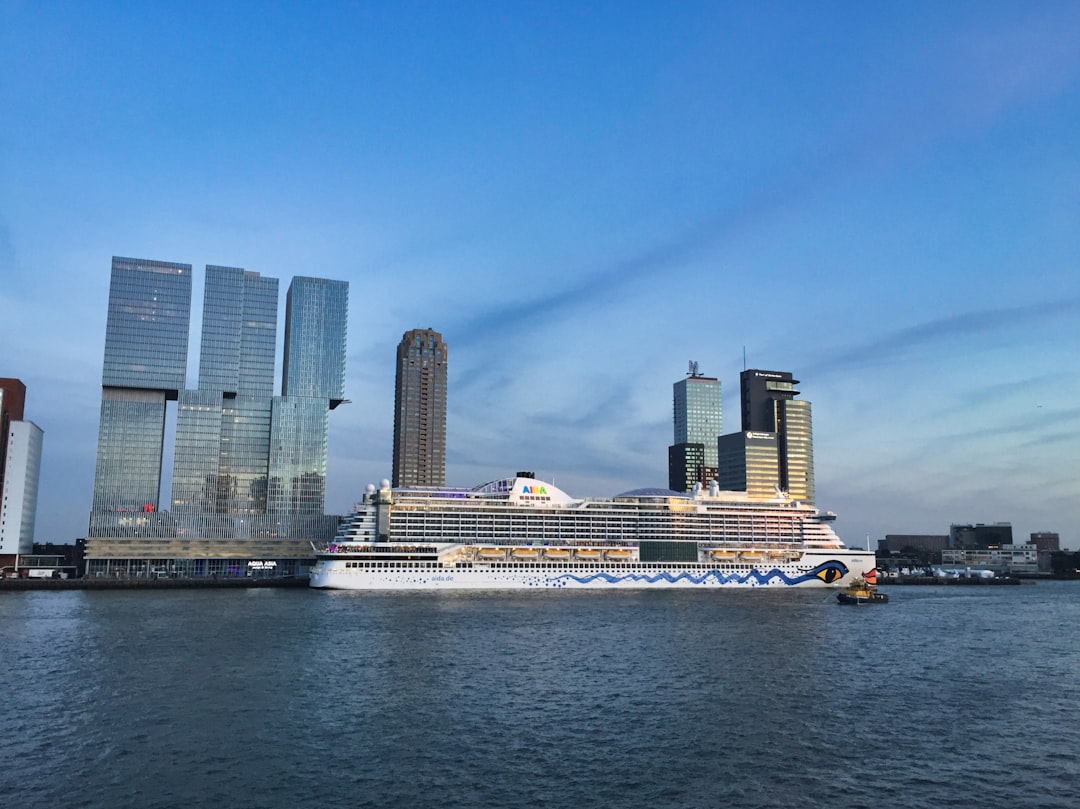Drake’s Passage, a body of water that separates South America from Antarctica, is renowned for its tumultuous seas and breathtaking vistas. This narrow stretch of ocean, measuring approximately 600 kilometers (370 miles) wide, is often regarded as one of the most challenging maritime routes in the world. The passage is not only a vital link for vessels traveling between the Atlantic and Pacific Oceans but also a gateway to the stunning landscapes and unique wildlife of Antarctica.
For adventurers and nature enthusiasts alike, traversing Drake’s Passage is an unforgettable experience that combines the thrill of exploration with the beauty of some of the planet’s most remote regions. The allure of Drake’s Passage extends beyond its geographical significance; it is steeped in a rich tapestry of maritime history and exploration. The passage has long been a point of fascination for sailors, explorers, and scientists, drawing them to its unpredictable waters and the promise of discovery.
As travelers embark on their journeys through this iconic waterway, they are not only navigating a physical space but also stepping into a narrative that has shaped human understanding of the southernmost continent. The passage serves as a reminder of the power of nature and the spirit of adventure that drives individuals to explore the unknown.
Key Takeaways
- Drake’s Passage is a treacherous stretch of water between South America’s Cape Horn and the South Shetland Islands of Antarctica.
- The passage is named after the famous explorer Sir Francis Drake and has a rich history of maritime exploration and trade routes.
- Unique wildlife such as albatrosses, penguins, and whales can be spotted along the passage, along with stunning icy landscapes.
- The best time to cruise through Drake’s Passage is during the Antarctic summer, from November to March, when the weather is milder.
- Packing essentials for a Drake’s Passage cruise include warm clothing, seasickness medication, and binoculars for wildlife spotting.
History of Drake’s Passage
The history of Drake’s Passage is intertwined with the age of exploration, marked by the daring voyages of seafarers who sought new trade routes and territories. Named after Sir Francis Drake, an English explorer who navigated these waters in the late 16th century, the passage has been both a challenge and a source of inspiration for countless adventurers. Drake’s journey was not merely about discovery; it was also a quest for wealth and glory during a time when European powers were vying for dominance over global trade routes.
His successful navigation through these treacherous waters opened the door for future expeditions to Antarctica. In the centuries that followed, Drake’s Passage became a focal point for scientific exploration and research.
Expeditions led by figures such as Ernest Shackleton and Robert Falcon Scott further solidified the passage’s reputation as a site of both peril and wonder. These explorers faced extreme weather conditions and unpredictable seas, yet their determination to reach Antarctica laid the groundwork for modern understanding of polar environments. Today, Drake’s Passage continues to be a vital route for research vessels and cruise ships alike, bridging the gap between human curiosity and the natural world.
Unique Wildlife and Landscapes Along the Passage

One of the most captivating aspects of Drake’s Passage is its rich biodiversity and stunning landscapes. As travelers navigate these waters, they are often treated to glimpses of remarkable wildlife that call this region home.
Humpback whales, orcas, and minke whales can frequently be spotted breaching the surface, while seabirds such as albatrosses and petrels glide gracefully overhead. The sight of these majestic creatures in their natural habitat adds an exhilarating dimension to any cruise experience. In addition to its diverse marine life, Drake’s Passage is surrounded by breathtaking landscapes that evoke a sense of awe and wonder.
The rugged coastlines of South America give way to the icy expanses of Antarctica, where towering glaciers and dramatic ice formations create a striking contrast against the deep blue waters. The stark beauty of this environment is both humbling and inspiring, reminding travelers of the raw power of nature. As they sail through the passage, passengers are often struck by the sheer scale and grandeur of their surroundings, making it an ideal setting for photography and reflection.
Best Time to Cruise Through Drake’s Passage
| Month | Sea Conditions | Weather | Wildlife Sightings |
|---|---|---|---|
| November | Choppy | Cloudy | Whales |
| December | Choppy | Sunny | Albatross |
| January | Calmer | Sunny | Penguins |
| February | Calmer | Sunny | Seals |
Timing is crucial when planning a cruise through Drake’s Passage, as weather conditions can significantly impact the experience. The best time to embark on this journey is during the Antarctic summer months, which typically span from late November to early March. During this period, temperatures are milder, ranging from -2°C to 8°C (28°F to 46°F), making it more conducive for exploration.
Additionally, longer daylight hours provide ample opportunities for wildlife sightings and scenic views. Travelers should also consider that peak wildlife activity occurs during these summer months. Penguins are nesting, seals are pupping, and whales are more frequently spotted as they migrate through the passage.
This vibrant ecosystem comes alive during this time, offering passengers a chance to witness nature at its most dynamic. While some may be tempted to cruise during other seasons for solitude or unique experiences, it is essential to weigh these factors against the potential challenges posed by harsh weather conditions that can arise outside of summer.
Tips for a Smooth and Enjoyable Cruise Experience
Preparing for a cruise through Drake’s Passage requires careful planning to ensure a smooth and enjoyable experience. One essential tip is to choose a reputable cruise line that specializes in Antarctic voyages. These companies often have experienced crews familiar with navigating the challenging waters of the passage, ensuring passenger safety while providing informative commentary about the region’s history and wildlife.
Researching different itineraries can also help travelers find one that aligns with their interests, whether they seek adventure or relaxation. Another important consideration is to pack appropriately for varying weather conditions. Layering clothing is key, as temperatures can fluctuate throughout the day.
Waterproof outer layers are essential for protection against wind and rain, while thermal undergarments provide warmth during colder moments on deck. Additionally, travelers should not forget essentials such as sunscreen, sunglasses, and seasickness medication to ensure comfort during their journey through these unpredictable waters.
Activities and Excursions Available During the Cruise

A cruise through Drake’s Passage offers an array of activities and excursions designed to enhance the overall experience. Many cruise lines provide opportunities for guided shore landings on Antarctic islands, allowing passengers to step foot on this pristine continent. These excursions often include visits to penguin colonies or seal rookeries, where travelers can observe wildlife up close while learning about their behaviors from knowledgeable guides.
In addition to shore landings, many cruises offer onboard activities such as lectures from experts in marine biology or glaciology. Passengers can engage in discussions about climate change, conservation efforts, and the unique ecosystems found in Antarctica. For those seeking adventure, options like kayaking or ice climbing may be available, providing an exhilarating way to explore the icy landscapes while connecting with nature on a deeper level.
What to Pack for a Drake’s Passage Cruise
Packing for a cruise through Drake’s Passage requires thoughtful consideration due to the unique environment travelers will encounter. Essential items include waterproof clothing such as jackets and pants designed for cold weather conditions. Insulated gloves and hats are also crucial for keeping warm during excursions on deck or while exploring ashore.
Sturdy footwear with good traction is necessary for navigating rocky terrain during landings. In addition to clothing, travelers should bring personal items such as binoculars for wildlife watching and cameras to capture stunning landscapes. A small backpack can be useful for carrying essentials during shore excursions.
It is also advisable to pack any necessary medications or personal care items since access may be limited during the cruise. By preparing adequately, passengers can ensure they are comfortable and ready to fully immerse themselves in this extraordinary journey.
Safety Precautions and Considerations for the Journey
Safety is paramount when embarking on a cruise through Drake’s Passage due to its unpredictable weather patterns and challenging sea conditions. Cruise lines typically conduct thorough safety briefings before departure, outlining emergency procedures and guidelines for passengers. It is essential for travelers to pay close attention during these briefings and familiarize themselves with safety equipment onboard.
Additionally, passengers should remain aware of their surroundings while on deck or during excursions. Following crew instructions regarding safety protocols is crucial for ensuring personal safety as well as that of fellow travelers. Those prone to seasickness should take preventive measures before setting sail, such as consulting with a healthcare provider about suitable medications or remedies.
By prioritizing safety throughout their journey, passengers can enjoy their experience with peace of mind.
Popular Cruise Lines and Itineraries for Drake’s Passage
Several cruise lines offer itineraries that include traversing Drake’s Passage, each providing unique experiences tailored to different interests. Companies like Lindblad Expeditions and Quark Expeditions specialize in polar adventures, offering small-ship cruises that allow for intimate encounters with wildlife and personalized service from knowledgeable guides. These cruises often include educational programs focused on environmental conservation and scientific research.
Other popular options include larger cruise lines such as Princess Cruises or Holland America Line, which provide more extensive amenities onboard while still offering itineraries that feature stops in Antarctica. Passengers can choose from various lengths of voyages depending on their preferences—ranging from shorter trips focused solely on Antarctica to longer journeys that explore additional destinations in South America or beyond.
Testimonials and Reviews from Previous Passengers
Previous passengers who have navigated Drake’s Passage often share glowing testimonials about their experiences. Many describe the thrill of witnessing majestic whales breaching alongside their vessels or observing playful penguins waddling across icy shores. Travelers frequently express gratitude for knowledgeable guides who enhance their understanding of the region’s ecology while fostering a sense of connection with nature.
However, some reviews also highlight the challenges posed by rough seas during certain crossings through Drake’s Passage. Passengers recount moments of anxiety but often emphasize how these experiences contributed to their sense of adventure rather than detracted from it. Overall, testimonials reflect a deep appreciation for the beauty and wonder encountered throughout this remarkable journey—a testament to why so many consider it a once-in-a-lifetime experience.
Why Drake’s Passage Should Be on Your Bucket List
Drake’s Passage stands as an iconic destination that beckons adventurers from around the globe with its promise of breathtaking landscapes and unique wildlife encounters. The rich history intertwined with this maritime route adds depth to every journey undertaken through its waters—transforming mere travel into an exploration steeped in discovery and wonderment. For those seeking an unforgettable experience that combines natural beauty with thrilling adventure, cruising through Drake’s Passage should undoubtedly be on their bucket list.
As travelers navigate these challenging waters toward Antarctica’s pristine shores, they become part of a legacy that celebrates human curiosity and resilience in the face of nature’s grandeur. Whether witnessing majestic whales breach against a backdrop of towering glaciers or stepping foot on untouched land inhabited by playful penguins—each moment spent in this extraordinary region leaves an indelible mark on one’s soul. Ultimately, Drake’s Passage offers not just a journey but an opportunity for connection—with nature, history, and fellow explorers—making it an essential destination for anyone passionate about adventure travel.
In a recent exploration of Drake’s Passage, the notorious stretch of water between the southern tip of South America and Antarctica, adventurers have been captivated by the formidable cruise waves that challenge even the most seasoned sailors. For those interested in learning more about the geographical and historical significance of this treacherous route, a related article can be found on MyGeoQuest. This article delves into the unique environmental conditions and the rich history of exploration in the region. To read more, visit the article on MyGeoQuest.
WATCH NOW! Drake Passage: Earth’s Deadliest Waters Revealed
FAQs
What is Drake’s Passage?
Drake’s Passage is a body of water located between the southern tip of South America and the northern tip of the Antarctic Peninsula. It is known for its notoriously rough and unpredictable seas.
What is a Drake’s Passage cruise?
A Drake’s Passage cruise is a journey that takes travelers through the treacherous waters of Drake’s Passage, typically en route to Antarctica. These cruises offer a unique and adventurous experience for those seeking to explore the remote and pristine landscapes of the Antarctic region.
What are the waves like in Drake’s Passage?
The waves in Drake’s Passage are known for their size and power, often reaching heights of 30 feet or more. The area is notorious for its rough seas and unpredictable weather, making it a challenging but thrilling experience for travelers.
Is it safe to cruise through Drake’s Passage?
While Drake’s Passage is known for its rough seas, modern cruise ships are equipped to handle the conditions. Experienced captains and crew members are well-prepared to navigate through the challenging waters, and safety is a top priority for cruise operators.
What can I expect to see on a Drake’s Passage cruise?
A Drake’s Passage cruise offers the opportunity to witness stunning natural scenery, including icebergs, wildlife such as whales and seabirds, and the unique landscapes of the Antarctic region. Travelers can also participate in educational programs and activities to learn more about the area’s history, geology, and wildlife.
